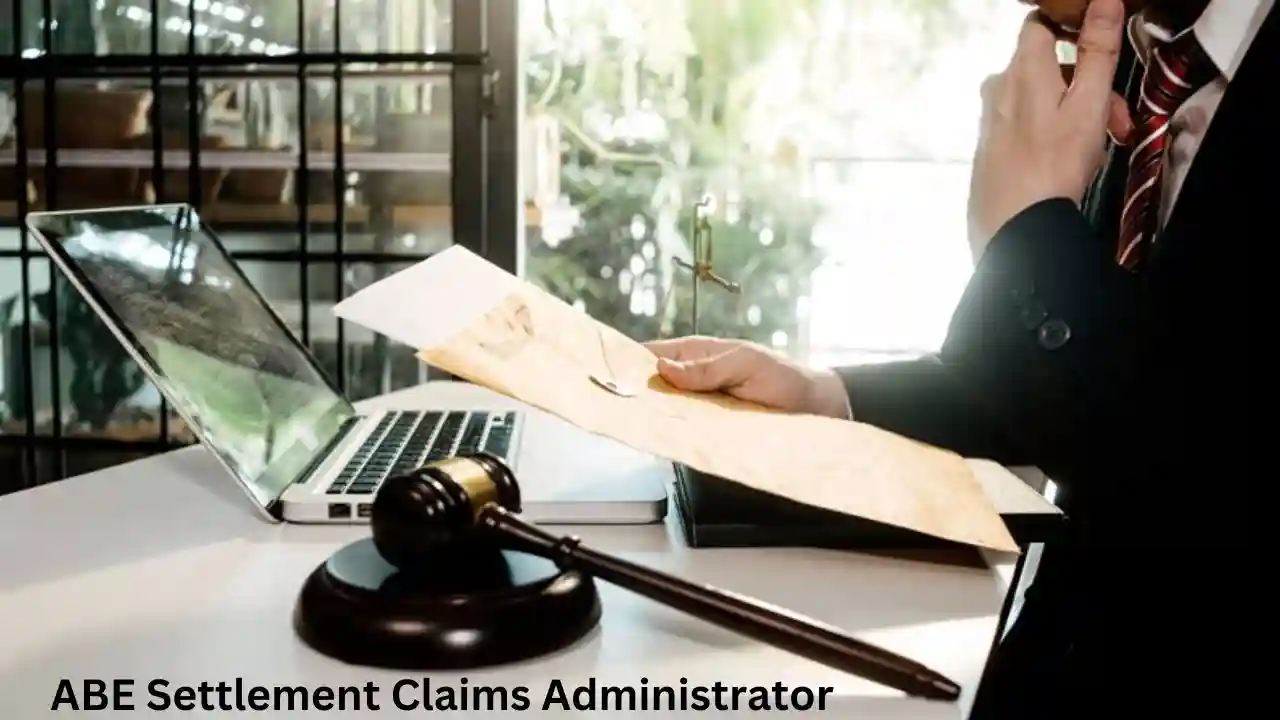Understanding the Role of an AEB Settlement Claims Administrator

1. Introduction
The world of legal settlements can be complex, especially when it involves significant settlements like the AEB (Auto Emergency Braking) cases. An AEB Settlement Claims Administrator plays a pivotal role in ensuring that these settlements are processed smoothly and fairly. This article will delve into the responsibilities, challenges, and impact of a Settlement Claims Administrator, providing a comprehensive guide for those involved in or affected by AEB settlements.
2. Background of AEB Settlement
The AEB settlement is a result of numerous legal actions related to the failure or malfunction of auto emergency braking systems in various vehicles. These cases often involve large automotive manufacturers and can impact thousands of claimants. The settlement aims to compensate affected individuals and rectify any safety concerns.
2.1 History of the AEB Settlement
Auto Emergency Braking (AEB) systems were introduced as a safety feature designed to prevent accidents. However, reports of malfunctions and failures led to a series of lawsuits, resulting in settlements to address the damages.
2.2 Key Stakeholders Involved
The key stakeholders in AEB settlements include automotive manufacturers, legal teams, claims administrators, and the claimants themselves. Each party plays a critical role in the resolution of these cases.
2.3 Legal Context Surrounding AEB Settlement
AEB settlements are governed by complex legal frameworks that ensure fairness and compliance with regulatory standards. Understanding these legal contexts is crucial for effective claims administration.

3. Role of a Settlement Claims Administrator
A Settlement Claims Administrator is responsible for overseeing the entire claims process, from initial filing to final resolution. They act as a neutral party, ensuring that the settlement terms are adhered to and that claimants receive their due compensation.
3.1 Responsibilities and Duties
The primary duties of a Claims Administrator include managing the claims process, communicating with claimants, verifying documentation, and distributing settlement funds.
3.2 Required Qualifications and Skills
A Claims Administrator must have a strong legal background, excellent organizational skills, and the ability to handle sensitive information with discretion.
3.3 Challenges Faced in the Role
The role is not without challenges, including managing large volumes of claims, resolving disputes, and ensuring compliance with legal standards.
4. The Claims Process
The claims process involves several steps, from submitting an initial claim to receiving the final settlement. Understanding these steps is crucial for both claimants and administrators.
4.1 Steps Involved in Filing a Claim
The process typically begins with the claimant submitting the necessary documentation, followed by a review and verification by the Claims Administrator.
4.2 Required Documentation
Claimants must provide specific documents, such as proof of purchase, evidence of damages, and identification, to support their claims.
4.3 Common Issues During the Claims Process
Common issues include incomplete documentation, delays in processing, and disputes over the validity of claims.

5. Managing Claims Disputes
Disputes are a common occurrence in claims administration, and resolving them efficiently is essential to maintaining the integrity of the process.
5.1 Types of Disputes that Arise
Disputes may arise over the eligibility of claims, the amount of compensation, or the interpretation of settlement terms.
5.2 Dispute Resolution Methods
Claims Administrators use various methods to resolve disputes, including mediation, arbitration, and direct negotiation.
5.3 Role of the Claims Administrator in Dispute Resolution
As a neutral party, the Claims Administrator plays a key role in facilitating dispute resolution, ensuring that all parties reach a fair agreement.
6. Legal and Ethical Considerations
Claims Administrators must adhere to strict legal and ethical standards to ensure the fairness and integrity of the settlement process.
6.1 Compliance with Legal Standards
Administrators must ensure that all actions are in compliance with relevant laws and regulations, including data protection and anti-fraud measures.
6.2 Ethical Issues in Claims Administration
Ethical considerations include maintaining impartiality, avoiding conflicts of interest, and protecting claimant confidentiality.
6.3 Best Practices for Ensuring Integrity
Best practices include transparent communication, thorough documentation, and regular audits to ensure compliance and integrity.
7. Case Studies of Successful AEB Settlements
Examining past settlements provides valuable insights into the challenges and successes of claims administration.
7.1 Case Study 1: Example of a Smooth Settlement
This case study highlights a settlement where the process was completed smoothly, with minimal disputes and timely compensation for all claimants.
7.2 Case Study 2: Overcoming Challenges in a Complex Settlement
This case study focuses on a more complex settlement involving multiple disputes and how the Claims Administrator successfully navigated these challenges.

8. Technological Tools in Claims Administration
Technology plays a crucial role in modern claims administration, streamlining processes and improving efficiency.
8.1 Use of Software and Digital Tools
Claims Administrators use specialized software to manage claims, track documentation, and communicate with claimants.
8.2 Advancements in Claims Processing Technology
Recent advancements in technology, such as AI and blockchain, are revolutionizing the claims administration process.
8.3 Future of Technology in Claims Administration
Looking ahead, technology will continue to play an increasingly important role in claims administration, with further innovations expected to improve accuracy and efficiency.
9. Financial Aspects of AEB Settlements
The financial management of settlement funds is a critical aspect of the claims administration process.
9.1 Understanding Settlement Funds
Settlement funds are allocated to compensate claimants and cover administrative costs. Proper management of these funds is essential to ensure fairness.
9.2 Allocation of Funds
Funds are allocated based on the terms of the settlement, with the Claims Administrator responsible for ensuring that all claimants receive the correct amount.
9.3 Financial Reporting and Accountability
Claims Administrators must provide regular financial reports to ensure transparency and accountability in the management of settlement funds.
10. Impact on Affected Parties
AEB settlements have a significant impact on the lives of affected individuals and corporations.
10.1 How AEB Settlements Affect Individuals
For individuals, these settlements can provide much-needed compensation for damages or losses caused by AEB system failures.
10.2 Impact on Corporations
For corporations, these settlements often involve significant financial outlays and can affect their reputation and operations.
10.3 Long-term Effects of Settlements
The long-term effects of settlements can include changes in industry practices, regulatory adjustments, and ongoing monitoring of safety features.
11. Expert Insights on AEB Settlements
Expert opinions provide valuable perspectives on the complexities and challenges of AEB settlements.
11.1 Quotes from Legal Experts
Legal experts offer insights into the legal challenges and implications of AEB settlements.
11.2 Insights from Claims Administrators
Experienced Claims Administrators share their experiences and tips for managing large-scale settlements effectively.
11.3 Opinions from Affected Parties
Voices from affected individuals provide a personal perspective on the impact of AEB settlements.
12. Emerging Trends in Claims Administration
The field of claims administration is constantly evolving, with new trends shaping the future of the industry.
12.1 Trends in Legal Settlements
Recent trends in legal settlements include increased transparency, faster processing times, and greater use of technology.
12.2 Changes in Regulatory Environment
Changes in regulations are influencing how settlements are administered, with stricter requirements for compliance and reporting.
12.3 Future of Claims Administration
The future of claims administration will likely see further integration of technology, greater emphasis on efficiency, and continued focus on claimant satisfaction.

13. Practical Tips for AEB Settlement Claimants
For those involved in AEB settlements, understanding the process and avoiding common pitfalls is crucial.
13.1 How to Prepare for Filing a Claim
Preparing for a claim involves gathering all necessary documentation, understanding the settlement terms, and seeking legal advice if needed.
13.2 Tips for Avoiding Common Pitfalls
Common pitfalls include submitting incomplete documentation, missing deadlines, and failing to follow up on claims. Being proactive and organized can help avoid these issues.
13.3 Resources for Claimants
Various resources are available to help claimants navigate the settlement process, including legal aid, online guides, and support groups.
14. Future Outlook for AEB Settlements
The landscape of AEB settlements is likely to change in the coming years, with new developments on the horizon.
14.1 Predictions for Future Settlements
Future settlements may involve more stringent safety standards, larger compensation packages, and quicker resolution times.
14.2 Potential Changes in Legislation
Legislation may evolve to provide greater protection for consumers and more rigorous oversight of automotive safety features.
14.3 Role of Technology in Future Settlements
Technology will continue to play a vital role in shaping the future of settlements, with advancements expected to streamline processes further and enhance accuracy.
15. Conclusion
In conclusion, the role of an AEB Settlement Claims Administrator is multifaceted and crucial to the fair and efficient resolution of claims. As technology advances and regulations evolve, the importance of skilled and ethical claims administration will only grow. For those involved in or affected by AEB settlements, understanding the process and staying informed about emerging trends is essential.










